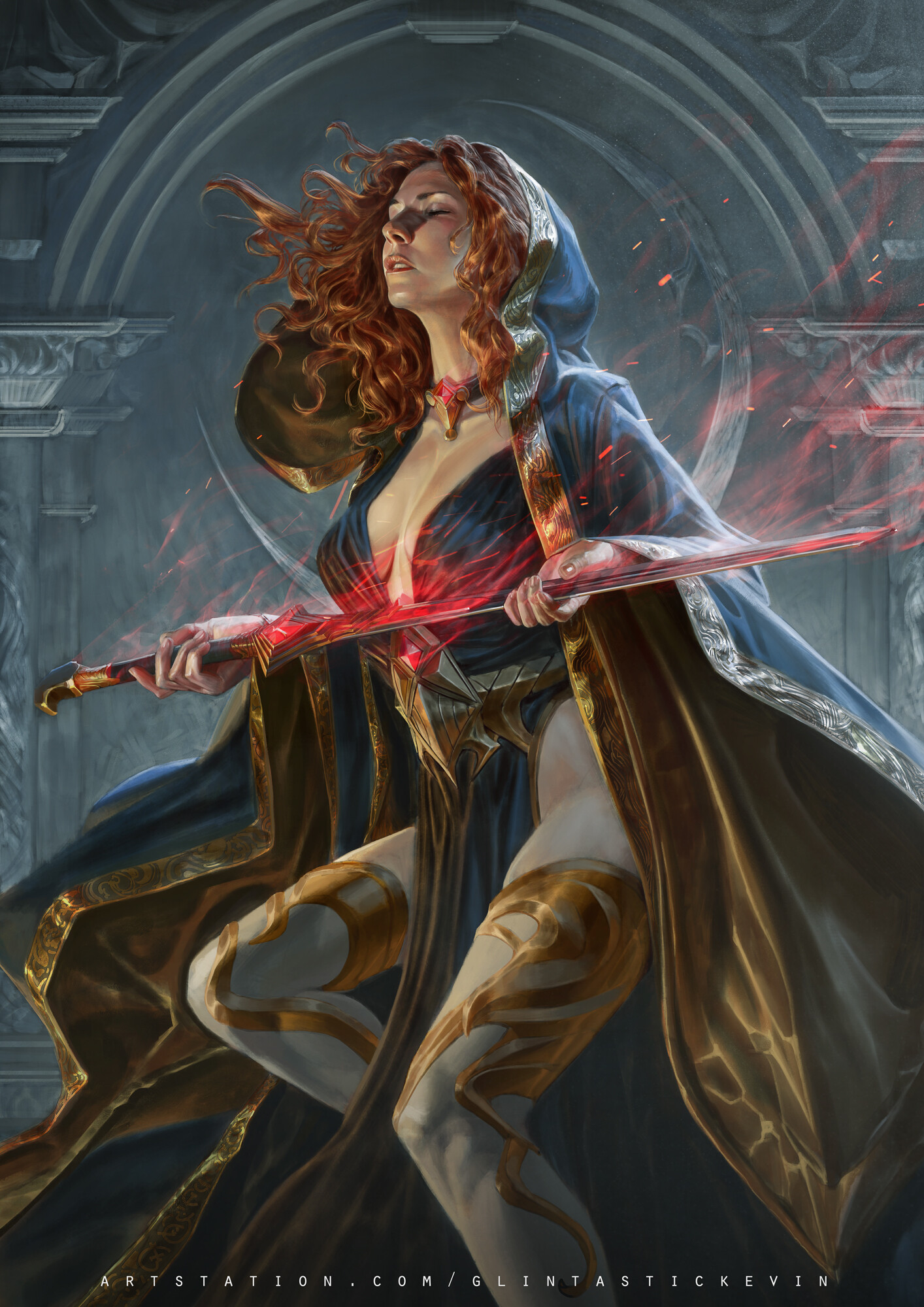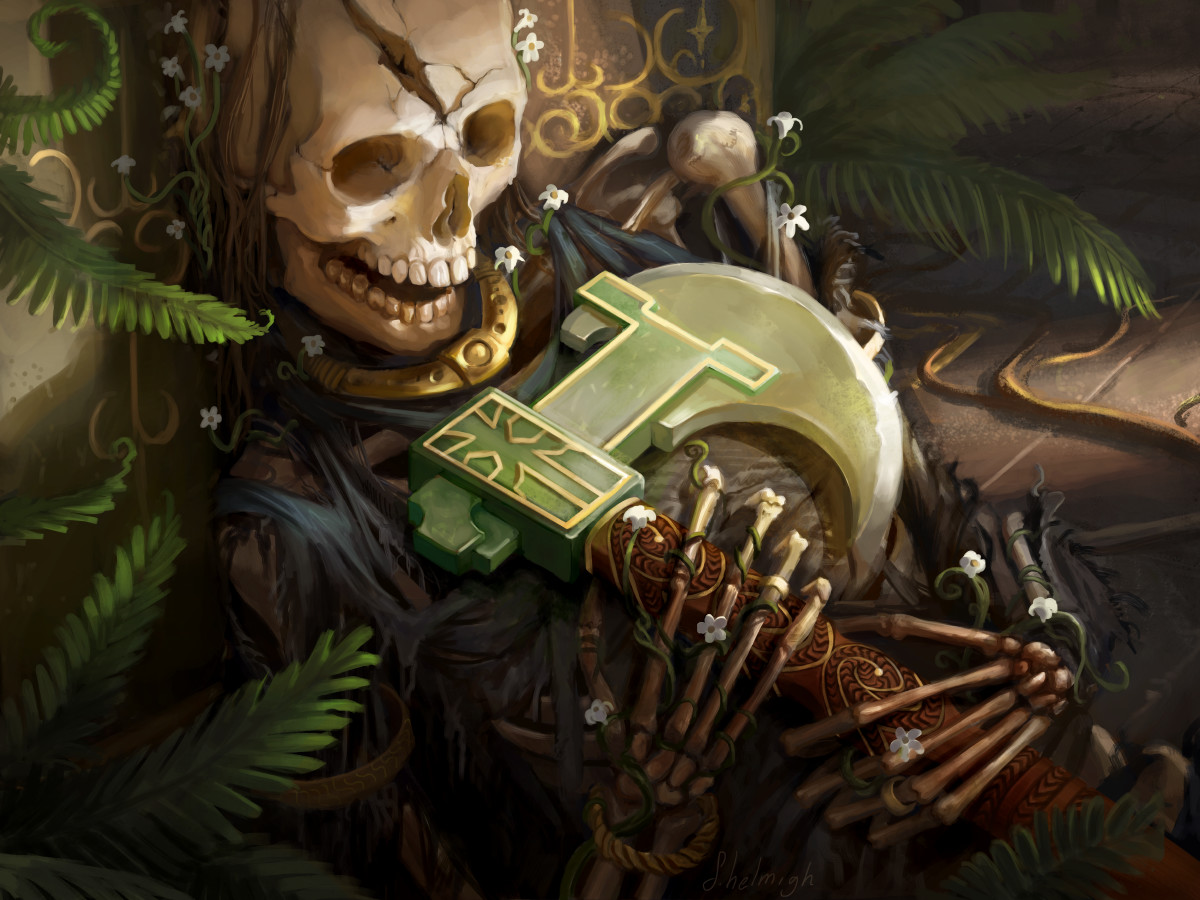Auramancy
"The tapestry of magic that flows through the world of Orr penetrates every being and object. The art of Auramancy is simply learning how to unravel those threads, and tie them back in new configurations. We cannot choose with exact certainty what enchantments this may Awaken, but a clever, and practiced Auramancer will learn which threads of the weave hold the most potential before they take hold of the strand."Auramancy is the art of releasing the magical potential within ordinary objects. In a very real sense, this stirs the object in question to life, and gives it an awareness of the universe that Arcanists simply refer to as its Awakened state. Some objects awaken of their own volition through Resonance, and some objects return to 'slumber' over time. There are different levels of awakening within such objects, ranging from dull, superficial magical properties (such as pendant giving off a noticeable sparkle even when the light does not touch it) to an awakened state that actually includes true sentience, allowing the object to think, feel, and exhert its will on others. A magic object made exude any number of different arcane properties once the Auramancer has awakened it, but the potential of these properties is not something that the Auramancer can influence. Certain types of materials and objects have a tendency, however, for reliable magical effects, and so it is often the 'crafting' of an item that is most important when seeking a specific type of enchantment. Gold, and silver, for instance, are metals innately attuned to the weave of Transmutation, while steel is attuned to the weave of Abjuration. This fact also means that objects of greater purity allow for more nuanced, and specific Awakenings. The shape of an item also influences the manner in which the weave of magic might be drawn out. Partificular shapes, of various sizes allow for further manipulation, and specificity during Awakening. For these reasons, an Auramancer is very likely to be a craftsman of another trade, and might specialize in enchanting only one type of object, such as a lapidary who enchants rings, and jewelry where they can control the materials, the gemstones, and the overall shape of the configuration. Any object 'can' be awakened, but it is a ritual that requires a great deal of time, and costly material components, and thus not something that one would want to squander away by choosing an inferior quality of item.
Rituals and Materials
In the same way that the shape, and configuration of object will determine what properties it might Awaken with, the shape, dimensions, and materials of the Auramancer's arcane labratory will hold some sway over the art itself. Auramancers require only an Arcane Altar in order to perform their craft, but a distinguished Auramancer will often need an entire workshop with different rooms baring different shapes, and material assets. Rooms with floors covered in sand in the shape of a star, rooms with moss-covered stones in the shape of an oval, or square with tiered water fountains. The more detailed, and controlled the environment in which the altar rests is, the more specificity the Auramancer can evoke with during the Awakening. There are some Arcane Altars that were built with enormous expense in order to Awaken just one item of legendary quality.
The Altar itself (sometimes simply referred to as an Enchanting Table) is a disk inlaid with a planar map, used for unravelling the weave of magic bound within the item.
While there are many forms the ritual can take, the first step is always to evoke the item into what is called a 'Thrumming' state. This state is most often achieved by 'Calling' to the object and searching the weave for its true name. This is sometimes called the 'opening of the eyes' where the object is given life, and purpose beyond its resting state. The next part of the ritual is the 'Request', where the Auramancers and the object 'communicate' to some limited degree with one another. Thje object is asked to fulfill the burdens of the weave. The Request is the more arduous, and involved process of the ritual, for the Auramancer and the object may be locked in that state for hours, sometimes days, and items of mythical quality are said to take months, even years in order to accept an enchanter's Request. Once an agreement has been made, the final stage of the ritual is the 'Binding' of the Request to the object. This often takes the forms of glowing fields of light, runic markings upon the object, or other, mysterious visitations of the power, which is why magic items are often visible or known to be enchanted nearly at a glance. Once an item has been bound, it is difficult to adjust its Request, and doing so could destroy the object outright.
"Items, and objects which have been Awakened exhibit many unique properties, such as the potential for them to resist weathering, and the tarnish of time. Magical weapons, and blades keep their sharpened edge for hundreds of years, magical amulets and rings gather no rust, and all Awakened items are notoriously difficult to break unassisted.







Comments